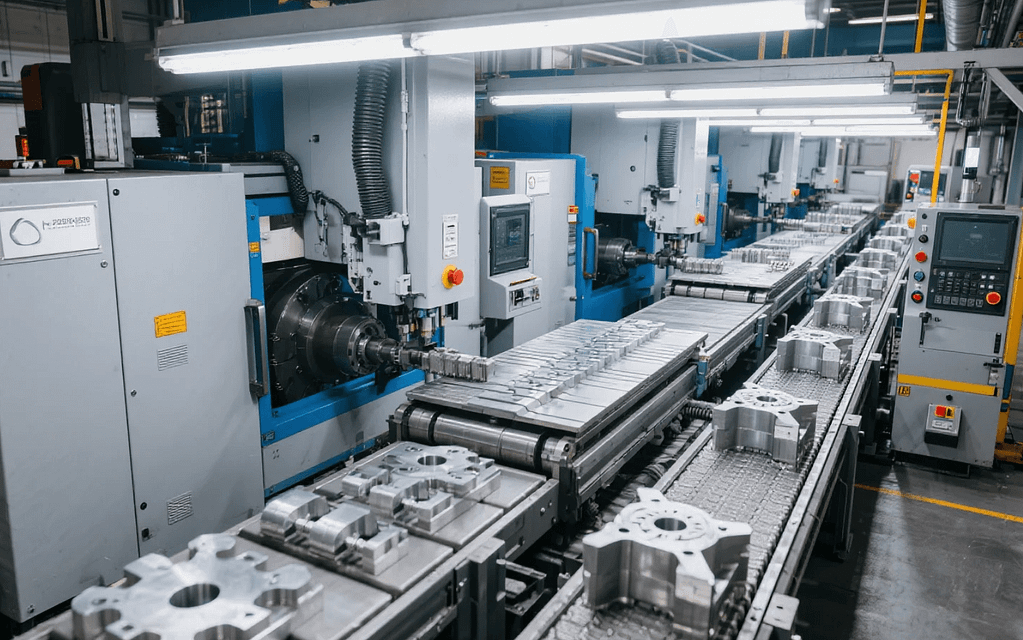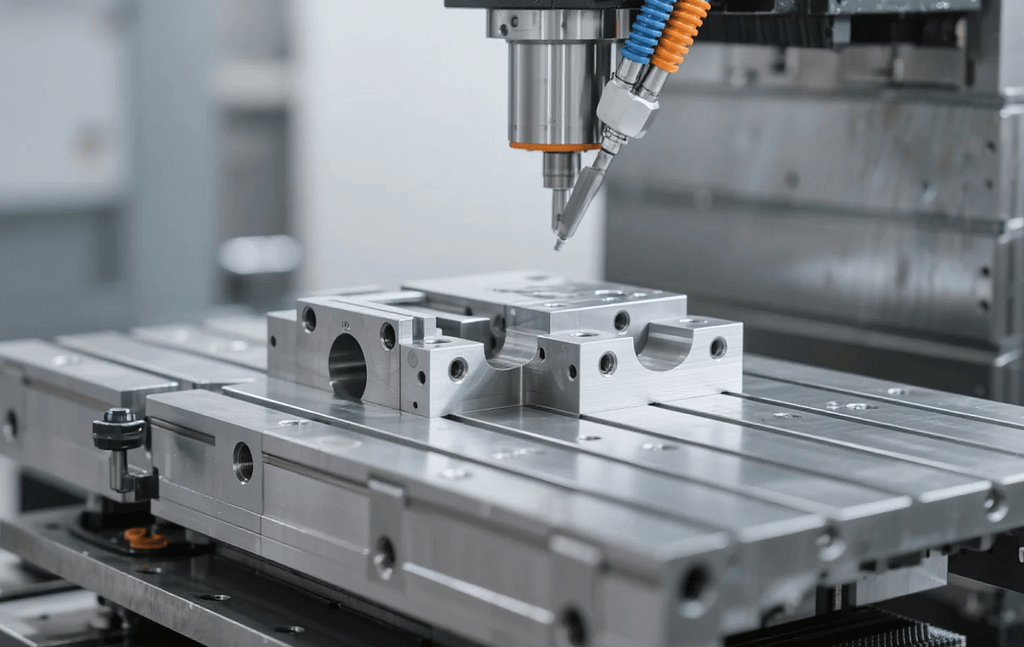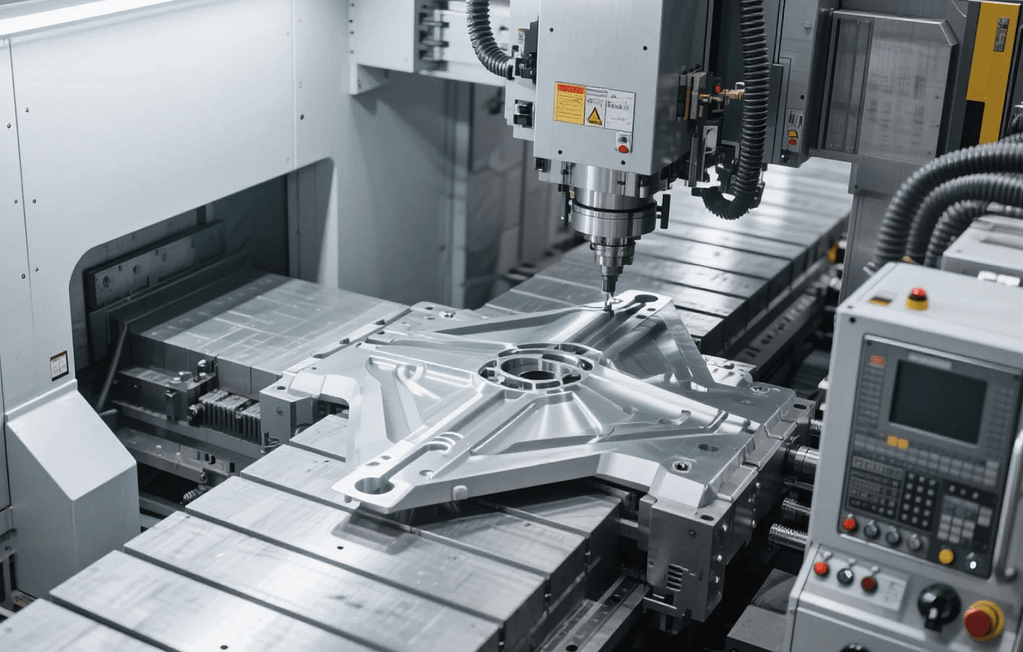The aerospace industry is fundamentally defined by precision, reliability, and the unwavering demand for components that can withstand extreme operational conditions. When the margin for error is virtually zero, the manufacturing method chosen becomes paramount. This is precisely where advanced CNC machining for aerospace applications steps in, cementing its role as the backbone of modern aviation and space exploration. This deep dive will explore how Computer Numerical Control (CNC) technology is not merely a manufacturing technique but a critical enabler of the industry’s most ambitious projects, specifically tailored for the needs of professionals seeking high-quality, specialized manufacturing services.
The Unwavering Demand for Precision in Aerospace Manufacturing

Aerospace components—ranging from intricate turbine blades and engine parts to structural airframe sections and complex satellite mechanisms—require tolerances measured in mere micrometers. Any deviation can have catastrophic consequences, affecting fuel efficiency, structural integrity, and, most critically, safety.
The processes involved in creating these parts must accommodate an array of challenging materials. High-performance alloys like Titanium, Inconel, and various advanced composites are standard in this sector due to their exceptional strength-to-weight ratio and resistance to high temperatures and corrosion. Consequently, the machinery used must be robust, highly accurate, and capable of maintaining consistency across long production runs. CNC machining for aerospace offers this precise blend of material compatibility and dimensional accuracy, making it irreplaceable.
Why CNC is Critical: Core Characteristics of Aerospace Manufacturing

To truly understand the value of CNC in this domain, one must examine the key characteristics of aerospace manufacturing that directly benefit from this technology.
Ensuring Unmatched Repeatability and Traceability
One of the most compelling advantages of CNC is its inherent ability to deliver unmatched repeatability. Once a program is validated and executed, every subsequent part is machined to the identical specifications. Furthermore, in aerospace, every component must be rigorously documented and traceable back to the raw material and the exact manufacturing process used. Modern CNC systems seamlessly integrate with Quality Management Systems (QMS) to log every operation, providing the granular data required to meet stringent regulatory standards, such as AS9100. This level of control is indispensable.
Mastering Complex Geometries and Advanced Materials
Aerospace design often incorporates complex, contoured surfaces—think of the aerodynamic shape of a wing or the cooling channels within an engine block. These intricate geometries are virtually impossible to produce manually or with less sophisticated machinery. High-axis CNC machines (3-axis, 5-axis, and even multi-tasking mill-turn centers) are specifically designed to tackle these challenges. Moreover, the automated precision cutting of difficult materials like Titanium (which is prone to work hardening) is managed effectively through precise tool path control and optimized cutting parameters, features standard to advanced CNC machining for aerospace.
Reducing Material Waste and Optimizing Supply Chains
Material costs in aerospace are exceptionally high. Scrap and rework are not just financial burdens; they represent significant delays. By using sophisticated CAD/CAM software to simulate and verify machining processes before cutting begins, CNC significantly reduces the likelihood of errors. Therefore, optimal material utilization, a process often referred to as “near-net shape” manufacturing followed by precision finishing, is achieved, directly benefiting the profitability and efficiency of the supply chain. In addition, the streamlined, automated nature of CNC allows for reliable ‘just-in-time’ production schedules.
Application Focus: Precision Manufacturing in Key Aerospace Sectors

The application of CNC machining for aerospace spans every segment of the industry, demonstrating its versatility and essential nature.
- Engine Components (Rotor and Stator Parts): Turbine blades, impellers, and casings demand superior surface finish and structural integrity. 5-axis CNC machining is essential here to produce the complex airfoils that ensure maximum engine efficiency and safety.
- Structural Airframe Components: From bulkheads and spars to landing gear components, these parts often involve large-scale milling of high-strength aluminum or titanium, where achieving precise bolt-hole alignment and structural stability is non-negotiable.
- Space Systems and Satellites: Components for orbital mechanics and sensitive instrumentation require extremely tight tolerances, pristine cleanliness, and lightweight construction, often involving specialized materials. CNC ensures the exacting fit and finish required for mission-critical deployment.
The Technological Evolution Driving Aerospace Forward
The continued advancement of CNC machining for aerospace is driven by several technological leaps. The integration of advanced features such as on-machine probing, closed-loop feedback systems, and thermal stabilization techniques ensures that even minor environmental shifts do not compromise the finished product’s geometry. Consequently, the move towards ‘lights-out’ manufacturing—where machines operate autonomously for extended periods—is becoming more prevalent, offering tremendous cost and efficiency benefits while maintaining peak quality. In conclusion, modern CNC is a sophisticated synergy of hardware, software, and metrology.
A Commitment to Quality and Certification
For any precision manufacturing service provider, particularly those serving the aerospace sector, the commitment must go beyond merely owning advanced machinery. It involves strict adherence to industry regulations. Manufacturers must hold certifications like AS9100D, which confirms that a Quality Management System is in place that meets the high standards of the aviation, space, and defense industries. Ultimately, partnering with a proven provider ensures that the component not only meets the drawing specifications but also the rigorous legal and safety requirements of the industry.
Conclusion
The question, Is CNC Machining the Future of Aerospace Precision? is perhaps better rephrased: Is CNC Machining the indispensable foundation of current and future aerospace precision? The answer is unequivocally yes. From the smallest fasteners to the largest structural components, CNC technology provides the dimensional accuracy, material compatibility, and documentation necessary to propel the industry forward safely and efficiently. For companies seeking to achieve the pinnacle of manufacturing quality for mission-critical components, embracing the capabilities of expert CNC machining for aerospace services is not an option—it is a mandatory requirement.
Frequently Asked Questions (FAQ)
Q1: What are the most common materials machined for aerospace components? A: Common materials include various grades of Titanium alloys (like Ti-6Al-4V), Nickel-based Superalloys (like Inconel), high-strength Aluminum alloys (like 7075), and stainless steels, all chosen for their superior performance under extreme conditions.
Q2: What is the significance of 5-axis CNC machining in the aerospace sector? A: 5-axis machining allows for the creation of complex, contoured surfaces—such as turbine blades and impellers—in a single setup. This reduces handling errors, improves surface finish, and enables the creation of highly intricate, weight-optimized parts that are critical for aerodynamic performance.
Q3: Does CNC machining address the industry’s need for traceability? A: Absolutely. Modern CNC systems integrate seamlessly with digital quality control and enterprise resource planning (ERP) systems, automatically logging tool usage, process parameters, and time stamps for every part, ensuring end-to-end traceability required by regulatory bodies like the FAA or EASA.